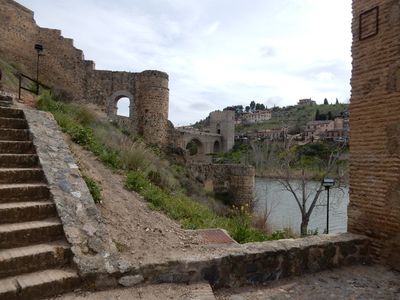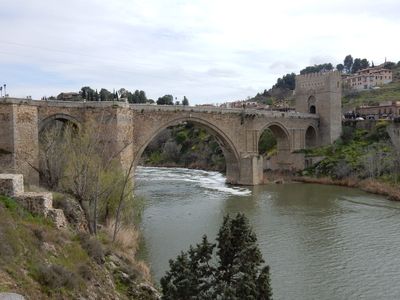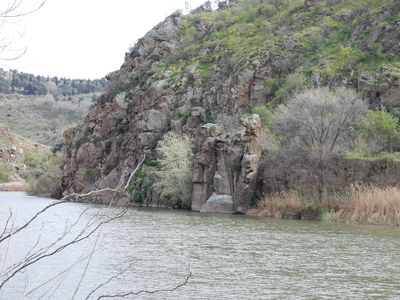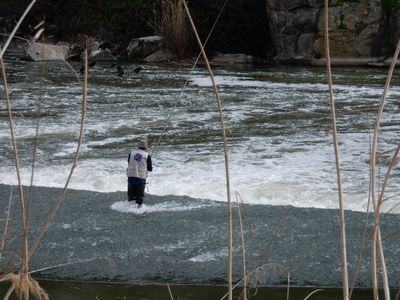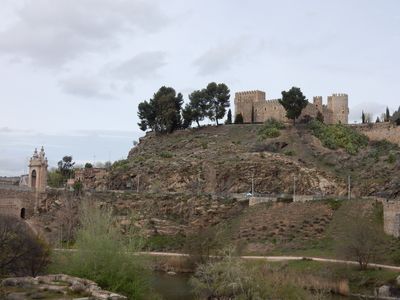After one more trip around our favourite street in Córdoba, which was deserted after all the Holy Wednesday festivities, we hiked back to the station for our train to Madrid. We had booked on the bullet-nosed high speed train and I was a little excited for the trip. After all the bus rides we were finally travelling the 'European Way'. And a fast train, no less.
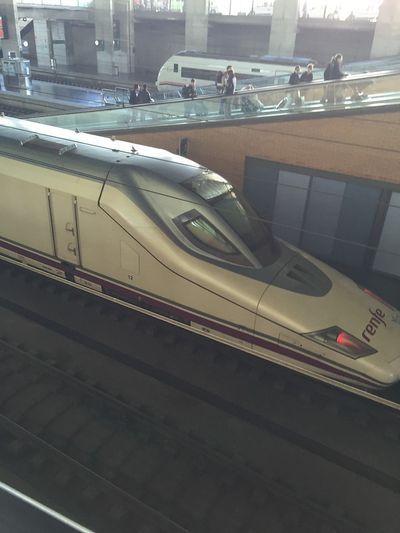
It was a fun ride. We were quickly up to a top speed of 270 km/h for our two hour ride to Madrid. It didn't feel much faster than normal highway driving, except when I tried to see something outside or, heaven forbid, snap a picture. Then you realized we were passing things at a very great speed.
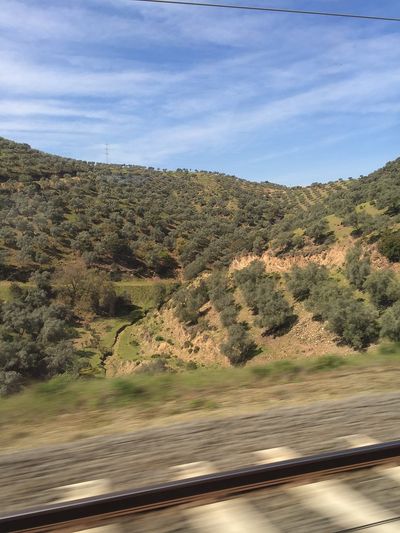
These plains in Spain are quite beautiful. I remember hearing somewhere they get lots of precipitation and it shows. Lots of trees dotting green pastures, with sheep and goats and later, cows. Quite honestly, it was a lot like the plains at home, except for the rocky outcroppings that dotted the landscape. And then the train slowed, we rolled past industrial areas, then apartment blocks, then we were in Madrid. We went from the train to the metro, got off at the Bilbao station and found our hotel.
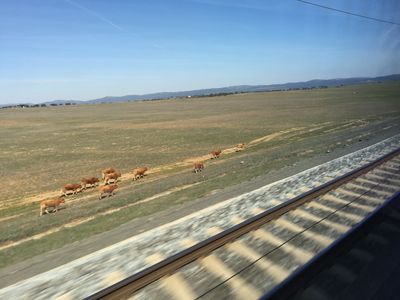
A Brief Aside... #
You know, all these cities are old and romantic and beautiful. But like all cities it seems, they continue to grow, and there isn't the investment in aesthetics anymore. We passed mile after mile of the same ugly, tiny windowed, balcony-less brick apartment blocks on the way into Madrid and they looked like a sad and dreary place to live. Compared to the centre of Madrid, it was shockingly horrible.
As late as the 1920's, Madrid was still doing strong city planning, as witnessed in the glorious Grand Via. But that seems to have stopped in current times, outside of the centre of the city. Which is a shame. And totally consistent with home, although it doesn't feel like we do much planning in the centre at home either. But the centre of Madrid is glorious, so let's go back there now.
Back to the story #
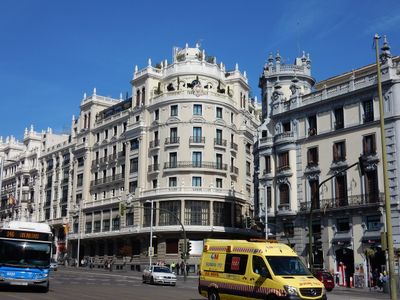
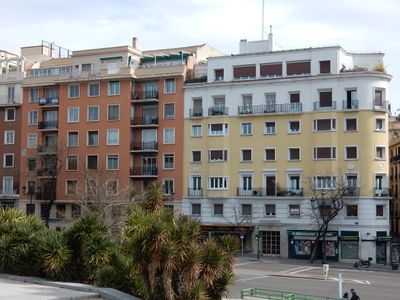
Our pension for the next five nights was the Pension Antonio, on Calle de la Palma. It was tiny and spare but quiet and clean and centrally located, between the Royal Palace to the east and the Prado Museum to the west, with lots of bars and restaurants and stores in between. It was just fine and cheap enough to recommend to others, although be warned that the last two blocks to the apartment feel pretty sketchy to walk down. But that's just the prairie boy in me reacting to the corrugated steel grates in front of the closed shops and the excessive, monotonous, ugly graffiti. I like Banksy and all, and some businesses pre-empted things by hiring an artist to spray paint their doors in advance, but holy crap it's just endless here.

One of the good ones!
I think the biggest thing that hit me about Madrid is that we were in a really big city. Really big. I looked it up and Madrid's population is 3.5 million people, which makes the largest city we've been to by far. You could tell the difference. No narrow, winding streets here. Instead we had long, grand boulevards, with six lanes of cars and huge fountains and statues in the roundabouts. And masses, and masses of people. Even when we were out looking for something to eat at 9PM, the sidewalks were packed with people doing the same thing.

We were in Madrid for Easter Weekend, which meant that some of the stores were open irregular hours, but most all of the bars and restaurants were open. And boy oh boy are there ever a lot of bars and restaurants! I've never seen so many places packed that tightly before. Every single street was packed with places big and small. We found a really good sandwich shop on Calle Pez and a gourmet pizza place nearer Bilbao station and lots of bakeries and fruit stands to keep our backpacks stocked up. But there were more than enough people to keep them all going.
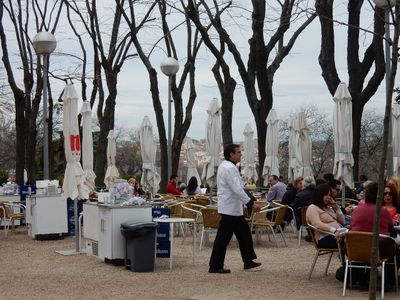
Too fancy for us.

Mmmm...that's more like it!
The long weekend and fine weather meant everyone was out enjoying their time off, so we loaded up our backpacks and joined the fray. We walked west toward the Plaza d'Espana, with its huge foutain at one end and massive statue at the other. It's a very impressive square, surrounded by regal offices and fancy hotels.
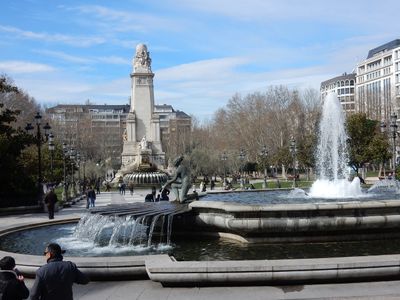
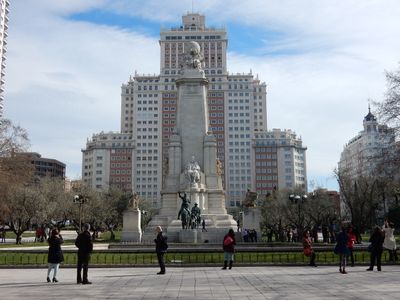
The normal circuit has one walking left to the Royal Palace, but we went right to walk through a fine little park. We were surprised to see a stone temple on a hill in the middle of the park so went up to take a closer look. I assumed it was a Roman temple, but when we walked inside there were Egyptian hieroglyphs on the wall. What? We went looking for a pamphlet to figure out what we were seeing.
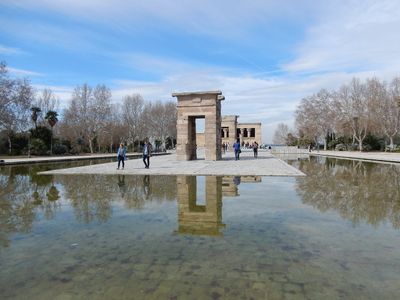
The Temple of Debod is a real Egyptian temple, but in Madrid. When the Egyptians built the Aswan Dam in the 1960's, many ancient temples and tombs were submerged. This temple was dismantled and moved to Madrid instead. Very interesting, but a little out of place.
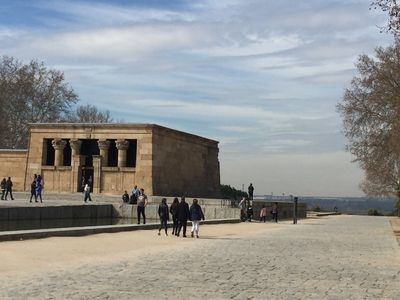
Near the temple was a gondola that gave rides to a large nature reserve right near the heart of the city. The line wasn't too long this holiday morning so we took a ride over. The views back to the city centre were amazing and the park itself was very nice. Lots of bikers and joggers running up the hill that we rode to.
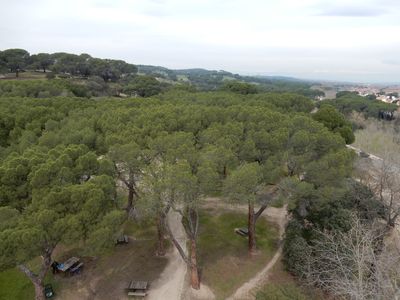
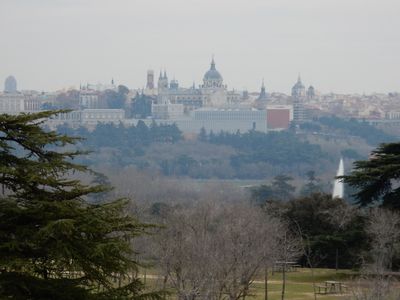
And then we went to the Royal Palace, along with twenty thousand other people. The palace was quite nice but it was a real crush of people, so we hung back a bit and wandered through two statue filled parks that surrounded the palace.
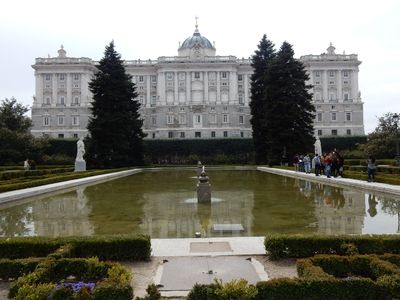
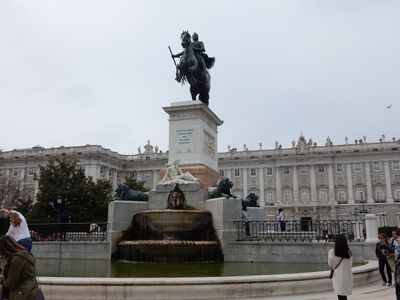
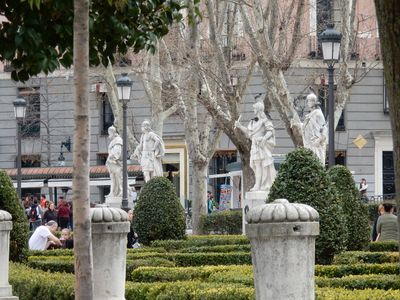
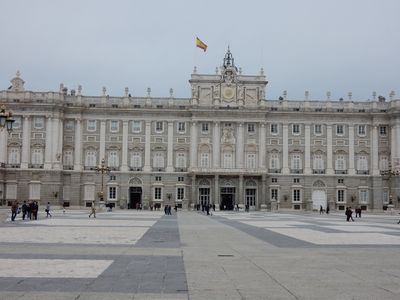
We kept up the park theme the next day, Good Friday. We hiked east from our room, behind the Prado Museum and the National Library to Paque de El Retiro. This huge space is where thousands upon thousands of Madrilenos go on their days off and this war, sunny spring day was no exception. We started at the formal north end of the park, with formal gardens and a large man-made lake. There were dozens of rowboats on the lake and a very long line of people waiting to rent one. We walked around to the east side and watched the boats from a large plaza, complete with lion statues looking over the boaters.
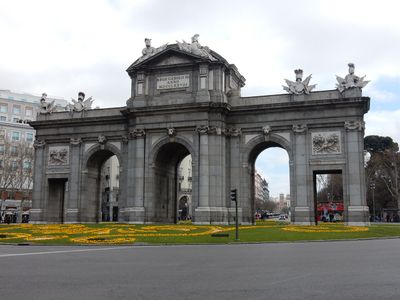
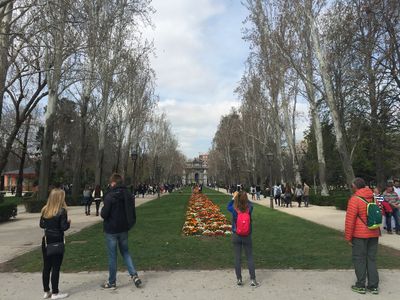

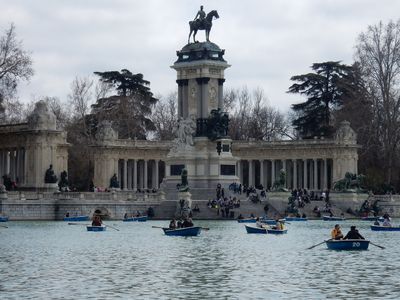
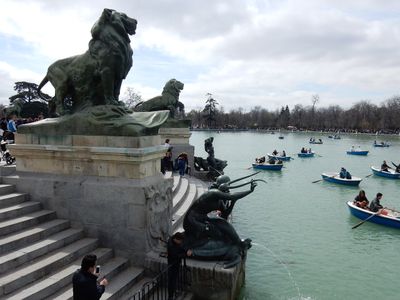
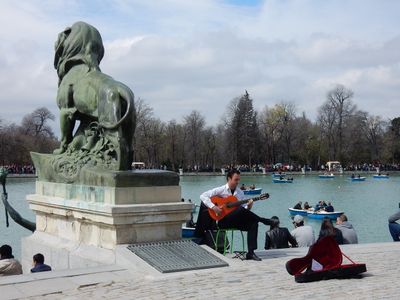
From there we strolled past two smaller palacios and another formal garden which contained Madrid's oldest tree (planted in the 1650's.) But I was mesmerized by the "cabin for the association of retired men", a rustic wooden lodge with a few dozen old fellows playing chess on the patio.

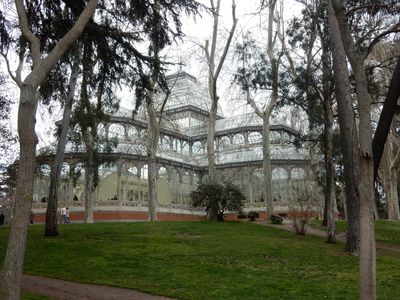

Madrid's oldest tree
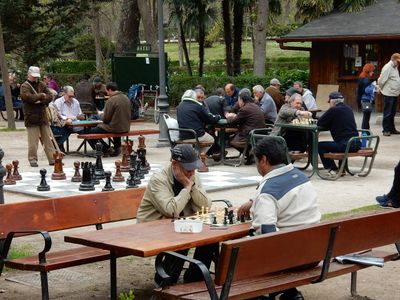
The south side of the park was more informal, with lots of benches and grassy slopes just begging to be lied down on. So we did, after eating our picnic lunch. We deserved a rest; we'd been walking a long, long time.

A long block of used book sellers, just outside the park
Even though we love toodling through parks, Madrid is home to some excellent museums and it didn't seem right to ignore them. The Prado Museum has free entry from 6PM - 8PM so at around 5:30 we went looking for the entrance. There was already around 100 people in line, but it looked manageable, so we queued up. We were at the side door, and it wasn't long before our line bumped into an even longer line for the main door. There must've been 2000 people in all, at least. It was huge!
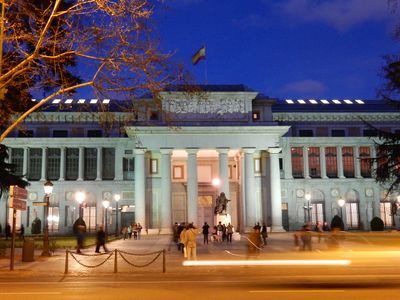
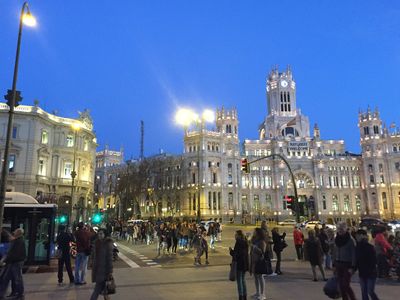
But the thing is, the Prado is even huger, and we all fit in with no problem and, aside from the 'big 3' paintings, there wasn't even a crowd. Sorry, no pictures were allowed, but it really was a fun time. We had a New York Times article outlining the preferred order to see the museum's highlights, which we followed and really felt like experts. My favourite paintings were by the Dutch Masters - we went through that gallery twice.
The other big gallery, the Reina Sofia, is focused on Cubist and Surrealist paintings by the likes of Picasso, Dali and Joan Miro. But I was there for one painting: Picasso's masterpiece "Guernica". It's fair to say that "Guernica" is the reason I wanted to go to Madrid. It's a massive painting, a protest painting for the bombing of women and children during the Spanish Civil War and I am so very happy I got to see it live and in person. It was even better than I thought it would be. (Although, I was very surprised that I didn't enjoy the Dalis more.)
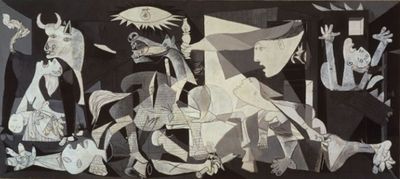
A picture of Guernica, via the Internet. Photos aren't allowed in the gallery!
I'm embarrassed to say I don't know much about the Spanish Civil War, other than Franco won, the Germans tested their arms in Spain prior to invading Poland, and Hemingway was there. The "Guernica" gallery helped me learn a bit more about it. The painting was commissioned by the Republican (in power, but lost the war) government for the 1939 World Expo, to help raise awareness of what was happening in Spain, and hopefully get some assistance. In the gallery, there was a replica of the pavilion where the painting was first shown, along with posters of the time and other reflections on the costs of war.
There was also a very interesting display showing Picasso's progression as he worked on the painting. His partner at the time was a photographer and she took a series of shots of this massive mural during its development. There was also a room full of 'post script' paintings where Picasso continued to develop the themes within the painting. Fascinating stuff.
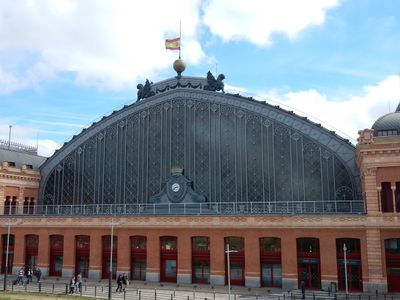
Atocha train station
Between parks, art galleries, the classic Atocha train station and strolling down wide boulevards admiring the architecture, we had a wonderful few days in Madrid. We found a tiny square near our room which we adopted as 'our square', since it had the perfect combination of restaurants, ice cream, coffee, newsstands and bookshops. It even had an art supply store! So it seemed like we ended up at our square at least once per day, at least to end our day with coffee and hot chocolate.

Easter Sunday was a big thrill for me. Before we left Cindy told me about the Sunday stamp market in Plaza Mayor so even though it was Easter we decided to see if it was on. And boy was it ever!
Plaza Mayor is the classic town square of Madrid. It's completely enclosed by four connected banks of buildings but the open square inside is huge and holds thousands of people. Usually the square is full of tables from the surrounding restaurants, and they were still there. But on Sunday's there are also 50 or so tables full of stamp, coin, postcard and bottle cap dealers out selling their wares. And since it was Easter Sunday, there were also a few thousand people in the middle of the square watching the final Easter procession of the season. All drummers putting on a show. So the square was loud and boisterous and I loved it.
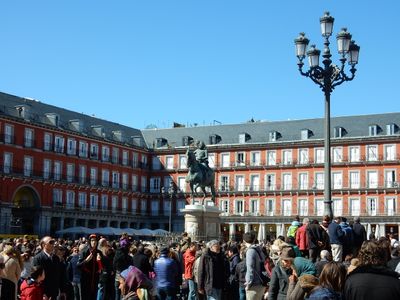
I spent an hour wandering around the tables, regretting I didn't collect Spanish stamps. And regretting my suitcase wasn't big enough to start collecting Spanish stamps! But I bought a set as a souvenir that would fit inside my notebook for protection and left it at that. Big fun.
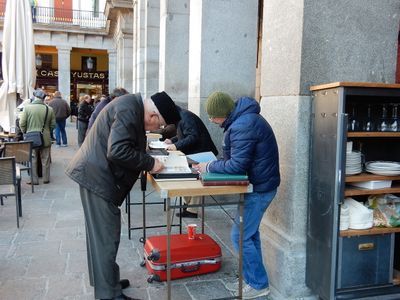
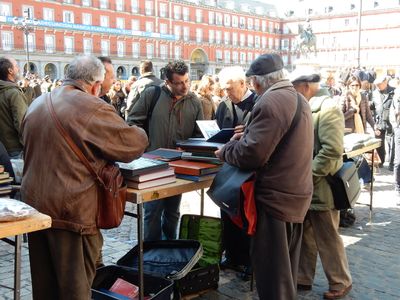

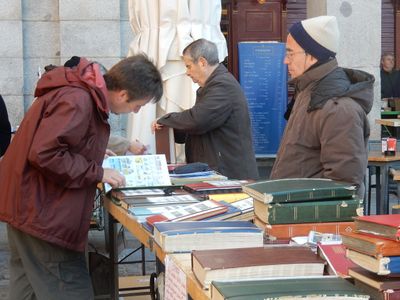
On our last day in Madrid we walked down to the train station for a day trip to Toledo. After four days in this massive, crowded city we needed some space. Toledo is a beautiful old walled city, perched high on top of a hill with great views of the surrounding valley, just 70km from Madrid. We were there in 30 minutes by train and had a wonderful afternoon climbing the hill and once again wandering through narrow, twisting streets.
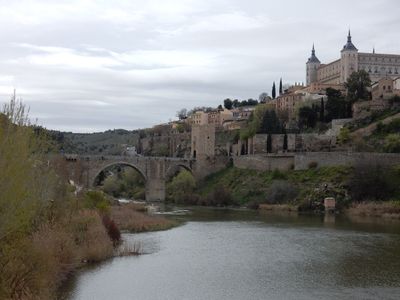

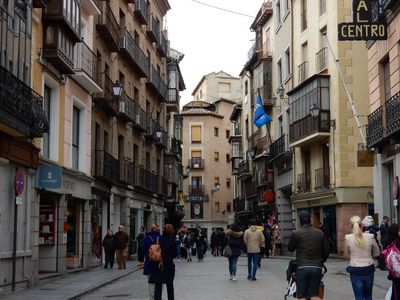

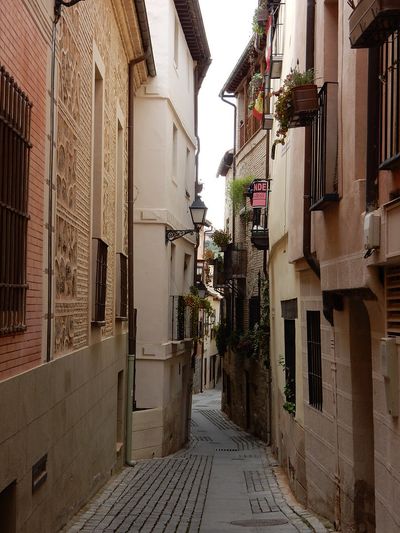
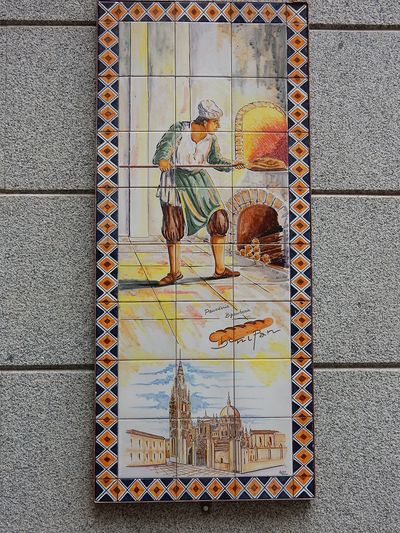
But the thing I'll remember most is the nature trail we found that went around the base of the city along the river that passes Toledo. We spent an hour or so walking along the river, watching the fishermen and the couples necking on benches, with sheer rock walls across the water to our right and the walled city above us to our left. And then, because we had time, we hiked back up to the city, up the incredibly steep stone staircase that passed through the walls, for some gelato before walking back down and across the river to the train station.
